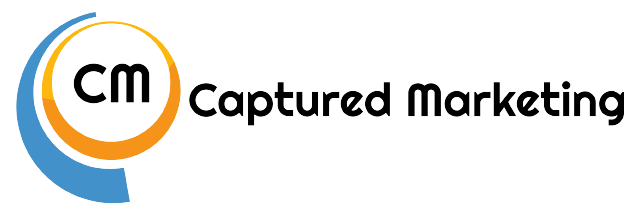
In the digital realm of 2024, speed is not just about fast cars; it’s about fast websites. Every second counts when it comes to engaging users and boosting search engine rankings. As more businesses move online, the fight for user attention has intensified, making the speed of a website a critical factor not only for user satisfaction but also for SEO performance.
Search engines like Google emphasize the importance of site speed in their ranking algorithms. A faster website offers users a better experience, leading to increased engagement, lower bounce rates, and, ultimately, improved rankings. But understanding why speed matters is just the start. We must also be equipped with the right tools to measure site speed and implement strategies that can effectively enhance it.
From choosing the right performance metrics to optimizing every element of your site, improving speed is both an art and a science. In this discussion, we will explore how site speed intersects with SEO and provide practical solutions and advanced techniques to enhance website performance. By prioritizing speed, we not only improve our SEO results but also build a stronger, more efficient online presence that serves our users better.
Understanding the Impact of Site Speed on SEO
Site speed plays a pivotal role in both user experience and search engine rankings, a relationship that has become increasingly important in today’s fast-paced digital landscape. When websites load quickly, users are more likely to stay engaged, browse more pages, and interact more positively. Users are quick to abandon pages that test their patience with slow load times, which often translates into higher bounce rates. Search engines, recognizing this, prioritize faster websites to ensure a quality experience for search users. Sites that load quickly are rewarded not only with higher search rankings but also with increased visibility and traffic.
Moreover, search engines like Google have explicitly highlighted the importance of speed in their algorithm updates. Recent updates have further reinforced speed’s influence, incorporating mobile site speed into rankings for mobile searches. These changes are designed to improve internet browsing for all users, pushing developers and site owners to prioritize speed optimization within their SEO strategies.
Key Tools for Measuring Website Speed
To effectively manage and improve site speed, it’s critical to utilize the right diagnostic tools. Here’s a rundown of some essential tools that we find invaluable:
– Google PageSpeed Insights is a fundamental tool that provides a performance score along with actionable recommendations to improve that score. This tool divides its output between desktop and mobile performances, recognizing the differing needs and constraints of these platforms.
– GTmetrix combines data from Google PageSpeed Insights and Yahoo! YSlow to provide insights into page load performance and recommends optimizations. GTmetrix also allows users to test their website from different server locations, giving a broader perspective on global performance.
– Pingdom is another useful tool that offers detailed insights into what exactly is slowing down your website. With clear graphs and stats, Pingdom offers time breakdowns and performance insights across different global regions.
When analyzing results from these tools, focus on key metrics like load time, size of pages, and the number of requests made by the browser. Understanding these metrics will guide you in making the most impactful changes to your site. Additionally, consider the prioritization of issues; tackle those that these tools mark as high priority first, as resolving these offers the quickest gains in performance enhancement.
Strategies to Improve Your Website’s Loading Time
Optimizing our website’s loading time is pivotal for both user retention and enhancing SEO performance. One effective strategy is optimizing image sizes and file formats. Images consume a significant amount of bandwidth, yet many websites carry unnecessarily large images. By resizing images and converting them to more efficient formats such as WebP, we can significantly reduce their impact on loading times.
Another crucial area is minimizing HTTP requests and reducing server response time. Every piece of your webpage requires a different HTTP request, so the more components your page has, the longer it takes to load. By streamlining the number of elements and combining files where possible, such as merging multiple CSS files into one, we reduce these requests and enhance site performance. Additionally, improving server response time can be achieved by choosing quality hosting solutions and considering geographical proximity to your user base.
We also implement browser caching, which saves a downloaded element of our website on the user’s device for future visits, and compress files using GZIP, reducing the size of data transferred between our server and the user. These tactics collectively enhance the visitor’s experience by drastically reducing loading times and resource use.
Advanced Techniques for Further Speed Enhancement
To further enhance our website’s speed, we implement several advanced techniques. Using a Content Delivery Network (CDN) allows us to distribute the hosting of files across multiple, globally distributed servers. This means that a user accesses files from the server closest to them, significantly reducing load time.
Asynchronous loading for CSS and JavaScript is another technique we employ. This method allows web pages to render more quickly. Instead of loading all the code in sequence, which can keep users waiting, asynchronous loading permits the rest of the web page to load without waiting for these files to complete. This significantly enhances the perceived loading time and improves user experience.
The implementation of HTTP/2 also plays a significant role in improving website speed. HTTP/2 allows multiple files to be transferred at the same time over a single connection, which significantly cuts down on the time each page takes to load. By using these advanced methods, we ensure that our website is not only faster but also more efficient, keeping us ahead in both user satisfaction and SEO performance.
Conclusion
In today’s digital age, where speed and efficiency reign supreme, investing in optimizing website speed is not just crucial—it’s indispensable. Improved site speed leads to enhanced user experience, reduced bounce rates, and better SEO rankings, which are essential components of online success. Our emphasis on continuous improvement in website performance reflects our commitment to excellence and our commitment to empowering and elevating our clients’ online presence.
At Captured Marketing, our approach is thorough and multifaceted, incorporating both foundational strategies and advanced techniques to ensure our clients’ websites perform exceptionally on all fronts. If you’re ready to take your website to the next level and maximize your online potential, we are here to help. Visit our website today to learn more about our SEO services in Phoenix.




